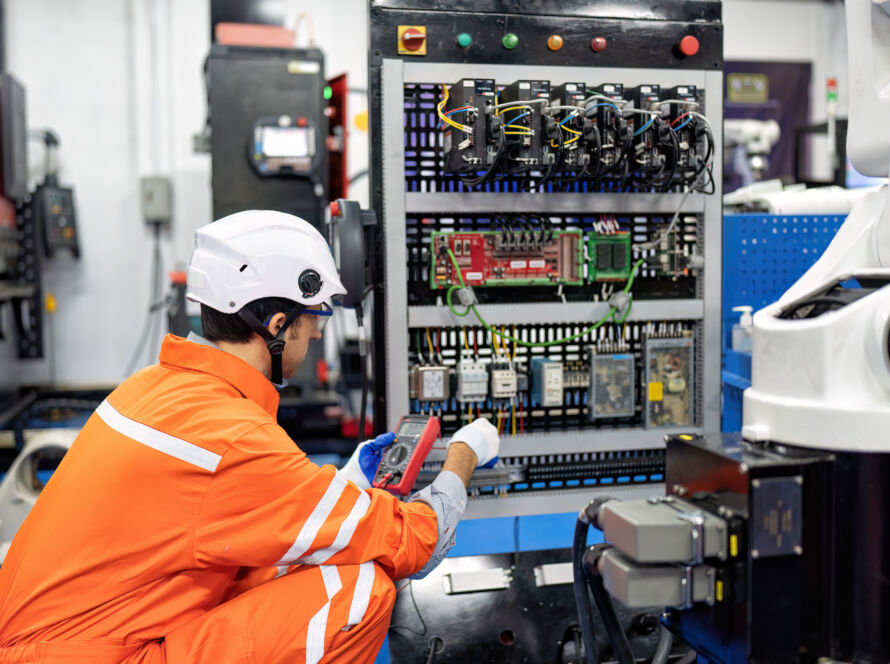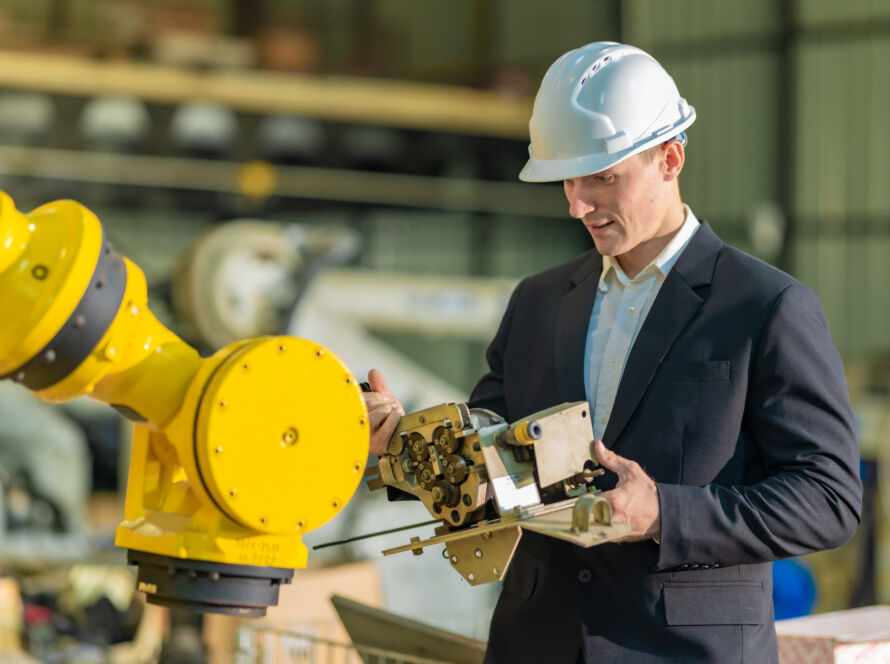Introduction
The Smart Automation Process with IoT Device Control and PLC Programming in 2025 marks a new era in how industries manage and optimize operations. By combining control systems, IoT technology, and Programmable Logic Controllers (PLCs), businesses can achieve smart manufacturing, real-time visibility, and long-term energy management.
This evolution is not just about new machines—it’s about building automation solutions that connect devices, collect data, and enable faster decision-making. As Industrial IoT continues to expand, organizations are moving from manual oversight to systems that require minimal human intervention, creating smart factories designed for adaptability and growth.
Understanding Smart Automation in Modern Industries
Smart automation connects sensors, devices, and machines into one intelligent network. Input from field devices flows into PLCs and is shared through modern communication protocols like OPC UA, Modbus, or Ethernet/IP. From there, information reaches Human-Machine Interfaces (HMIs) or cloud platforms, enabling operators to make informed decisions instantly.
Key benefits include:
- Improved process control and consistency.
- Real-time data acquisition that supports big data analysis.
- Better quality control with fewer errors.
- Enhanced flexibility across various industries, from automotive to pharmaceuticals.
By 2025, industrial applications will demand not just automation but truly connected ecosystems where every component communicates with each other for seamless integration.
Role of PLC Programming in Smart Automation
At the heart of this ecosystem are Programmable Logic Controllers. Known for their durability in harsh industrial environments, PLCs use programming methods like Ladder Logic and Structured Text to manage automated systems and complex processes.
- PLC programs ensure precise control of motors, conveyors, and robotics.
- They enable supervisory control in distributed control systems, keeping operations synchronized.
- They integrate with IoT networks to deliver real-time monitoring and predictive analytics.
By linking PLCs with Human Machine Interfaces, operators can visualize trends, track alarms, and optimize manufacturing processes with minimal downtime. This tight integration between hardware and software provides measurable results, from significant cost savings to long-term reliability.
IoT Device Control for Smarter Operations
IoT devices add intelligence to control logic by feeding continuous input into connected platforms. Through gateways and cloud computing, industries gain:
- Predictive maintenance that anticipates failures before they occur.
- Remote supervisory control for operators managing facilities across locations.
- Scalable automation solutions for industrial settings and smart factories.
- Improved energy management by tracking consumption and optimizing efficiency.
By combining IoT with PLCs, organizations move beyond basic automation into a world of smart manufacturing, where production processes are transparent, adaptable, and self-optimizing.
Key Trends in 2025 for PLC + IoT Integration
The year 2025 is significant for the growth of Industrial IoT and smart automation. Some of the key trends include:
- Artificial Intelligence and Machine Learning
AI uses big data from IoT networks and PLCs to optimize production lines and manufacturing processes. - Digital Twins
Virtual replicas of industrial processes allow engineers to test PLC logic, control systems, and communication protocols before applying changes in real environments. - Cybersecurity
Protecting automated systems and process control networks is vital as connectivity grows. - Cloud Computing and Edge Solutions
Data from IoT devices is analyzed locally or in the cloud for faster decision-making and informed decisions. - Adoption Across Various Industries
From water treatment to automotive, more sectors are embracing smart automation for compliance, quality control, and a competitive edge.
Challenges and Solutions in Smart Automation
Despite its benefits, adopting smart automation isn’t without obstacles:
- Legacy integration with older PLC hardware and existing systems.
- Differences in communication protocols between devices.
- Handling big data from thousands of sensors.
- Maintaining cybersecurity in connected networks.
Solutions often involve professional PLC programming services, middleware for seamless integration, and tailored automation solutions. With expert planning, these challenges can be transformed into opportunities for growth.
Case Scenarios of IoT and PLC in Action
- Food Industry: IoT sensors monitored temperature and flow, while PLCs maintained precise control. The result: improved quality control and reduced waste.
- Pharmaceuticals: Enhanced process control with IoT-linked PLCs reduced downtime and ensured compliance with safety standards.
- Automotive Manufacturing: Robotics integrated with PLCs and IoT devices delivered faster production processes and overall efficiency improvements.
These real-world examples show how smart automation creates a game-changer in productivity and sustainability.
Future Outlook Beyond 2025
Looking ahead, smart automation will rely heavily on digital twins, AI-driven PLC programs, and IoT-powered smart factories. Human Machine Interfaces will become more intuitive, while cloud computing and Industrial IoT will make informed decisions faster and more reliable.
The ultimate goal is to create automation solutions that adapt automatically to market demands, minimize human intervention, and drive significant cost savings. By prioritizing sustainability and energy management, industries can ensure resilience and growth in competitive markets.
Conclusion
The Smart Automation Process with IoT Device Control and PLC Programming in 2025 technology, businesses unlock overall efficiency, seamless integration, and a lasting competitive edge.
This transformation is not just about technology, it’s about building smarter, safer, and more sustainable industrial applications. For organizations ready to lead the way, embracing smart automation today is the surest path to success tomorrow.



